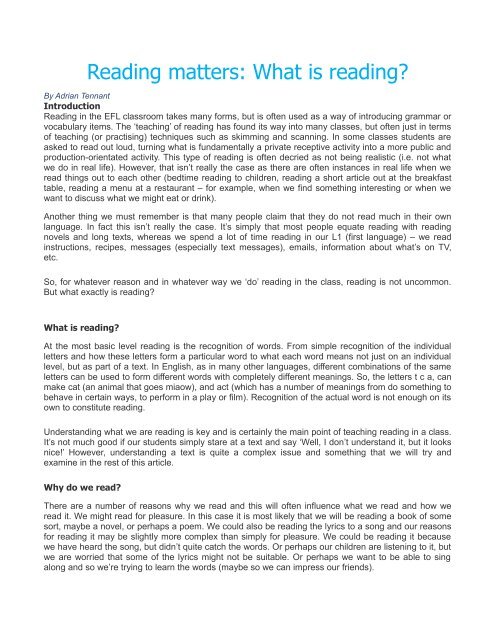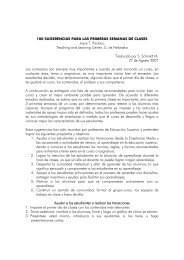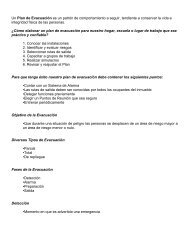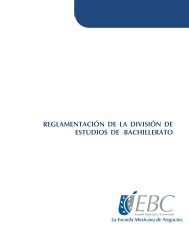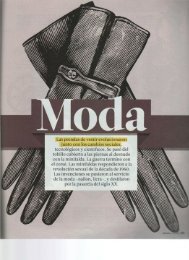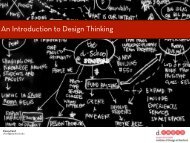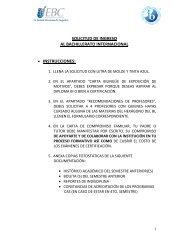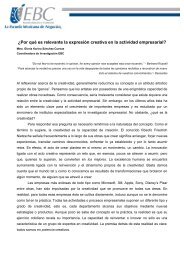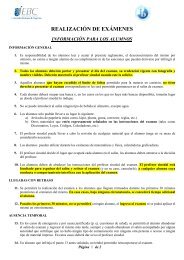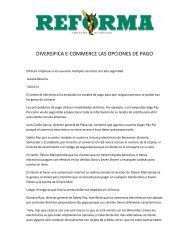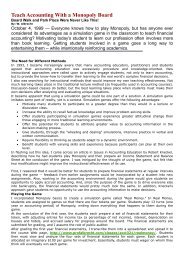types of texts - Intranet EBC
types of texts - Intranet EBC
types of texts - Intranet EBC
You also want an ePaper? Increase the reach of your titles
YUMPU automatically turns print PDFs into web optimized ePapers that Google loves.
Reading matters: What is reading?<br />
By Adrian Tennant<br />
Introduction<br />
Reading in the EFL classroom takes many forms, but is <strong>of</strong>ten used as a way <strong>of</strong> introducing grammar or<br />
vocabulary items. The ‘teaching’ <strong>of</strong> reading has found its way into many classes, but <strong>of</strong>ten just in terms<br />
<strong>of</strong> teaching (or practising) techniques such as skimming and scanning. In some classes students are<br />
asked to read out loud, turning what is fundamentally a private receptive activity into a more public and<br />
production-orientated activity. This type <strong>of</strong> reading is <strong>of</strong>ten decried as not being realistic (i.e. not what<br />
we do in real life). However, that isn’t really the case as there are <strong>of</strong>ten instances in real life when we<br />
read things out to each other (bedtime reading to children, reading a short article out at the breakfast<br />
table, reading a menu at a restaurant – for example, when we find something interesting or when we<br />
want to discuss what we might eat or drink).<br />
Another thing we must remember is that many people claim that they do not read much in their own<br />
language. In fact this isn’t really the case. It’s simply that most people equate reading with reading<br />
novels and long <strong>texts</strong>, whereas we spend a lot <strong>of</strong> time reading in our L1 (first language) – we read<br />
instructions, recipes, messages (especially text messages), emails, information about what’s on TV,<br />
etc.<br />
So, for whatever reason and in whatever way we ‘do’ reading in the class, reading is not uncommon.<br />
But what exactly is reading?<br />
What is reading?<br />
At the most basic level reading is the recognition <strong>of</strong> words. From simple recognition <strong>of</strong> the individual<br />
letters and how these letters form a particular word to what each word means not just on an individual<br />
level, but as part <strong>of</strong> a text. In English, as in many other languages, different combinations <strong>of</strong> the same<br />
letters can be used to form different words with completely different meanings. So, the letters t c a, can<br />
make cat (an animal that goes miaow), and act (which has a number <strong>of</strong> meanings from do something to<br />
behave in certain ways, to perform in a play or film). Recognition <strong>of</strong> the actual word is not enough on its<br />
own to constitute reading.<br />
Understanding what we are reading is key and is certainly the main point <strong>of</strong> teaching reading in a class.<br />
It’s not much good if our students simply stare at a text and say ‘Well, I don’t understand it, but it looks<br />
nice!’ However, understanding a text is quite a complex issue and something that we will try and<br />
examine in the rest <strong>of</strong> this article.<br />
Why do we read?<br />
There are a number <strong>of</strong> reasons why we read and this will <strong>of</strong>ten influence what we read and how we<br />
read it. We might read for pleasure. In this case it is most likely that we will be reading a book <strong>of</strong> some<br />
sort, maybe a novel, or perhaps a poem. We could also be reading the lyrics to a song and our reasons<br />
for reading it may be slightly more complex than simply for pleasure. We could be reading it because<br />
we have heard the song, but didn’t quite catch the words. Or perhaps our children are listening to it, but<br />
we are worried that some <strong>of</strong> the lyrics might not be suitable. Or perhaps we want to be able to sing<br />
along and so we’re trying to learn the words (maybe so we can impress our friends).
In other words, there might be multiple reasons why someone might read a text. But working out the<br />
purpose is a key factor when it comes to teaching reading. Why we are reading something will make a<br />
difference to how we read it, and in what depth. So, a mother checking whether the lyrics <strong>of</strong> a song are<br />
suitable for her children to hear will most likely be looking through the text for particular words or<br />
phrases she thinks are inappropriate. On the other hand, someone trying to learn the lyrics by heart will<br />
probably read the same lines a number <strong>of</strong> times (and may even read them out loud to try and reinforce<br />
the words).<br />
We must also bear in mind the purpose <strong>of</strong> the text from the writer’s point <strong>of</strong> view. Texts don’t exist in a<br />
vacuum; somebody wrote the text and they had a reason for doing so. It could be that the writer’s and<br />
the reader’s reasons are the same, or similar. But it is equally possible that the two have different<br />
purposes. The writer has a message they want to convey and they encode this message in the words<br />
and style they choose. The reader then tries to decode the message by reading the same words. This<br />
encoding and decoding doesn’t simply exist on the level <strong>of</strong> meaning, but also on the level <strong>of</strong> why the<br />
text was written.<br />
Does reading in a foreign language differ from L1 reading?<br />
At first glance the question seems rather silly. Of course reading isn’t different, whatever language you<br />
are reading in. The text might be written using a different alphabet or characters, it might be written<br />
from right to left, or bottom to top, but fundamentally the same processes are going on. Well, at one<br />
level this is certainly true, but it may well be that we are not really conscious or aware <strong>of</strong> how we are<br />
reading in our own language. Reading was a skill we developed as we grew up and as we became<br />
acquainted with different <strong>types</strong> <strong>of</strong> text. Once we start seeing these <strong>texts</strong> in a foreign language we are<br />
unable to decode the message. The problem is probably not that we are not using the correct<br />
techniques, but that we are unable to recognise the words and meaning. This causes us a big problem.<br />
The problem is that we begin to panic. We start to try and use different techniques and strategies to<br />
understand the text. We start to read every word in a way that we wouldn’t if the text was in our L1. We<br />
start to focus on aspects <strong>of</strong> the text, such as grammatical construction, something we probably wouldn’t<br />
do if it was in our L1. By doing this we find reading difficult and we become frustrated. So, it might not<br />
be that reading is inherently different between L1 and L2, but that doesn’t negate the fact that we<br />
probably have to teach (and relearn) all the strategies we already employ when reading a text in L1.<br />
How does all this impact on our classroom teaching?<br />
When we are teaching reading in class we have to begin by asking ourselves a series <strong>of</strong> questions in<br />
order to make the lesson as effective as possible. It is not good enough to just hand the students a text<br />
with a set <strong>of</strong> questions, ask them to read the text and answer the questions and think that we are<br />
actually teaching them something. Any learning that takes place in such a lesson will be incidental and<br />
not because <strong>of</strong> the teaching.<br />
So, planning our reading lessons is essential, and we need to make sure that our aims are clear and<br />
that the text and tasks are appropriate. In many cases we can relate our questions to what we do in real<br />
life with the type <strong>of</strong> text we choose. In other words, what do we read in real-life situations? Why do we<br />
read these <strong>texts</strong>? What is the purpose <strong>of</strong> the writer and <strong>of</strong> the reader (us in this case)? How do we read<br />
the text in order to get what we need from it?
Let’s have a look at a couple <strong>of</strong> examples.<br />
A timetable:<br />
• Who wrote the text? Someone who had the information and wants us to know certain<br />
information, such as times, in order to allow us to travel.<br />
• What is the purpose <strong>of</strong> the text? To give (travel) information, e.g. times, places etc.<br />
• How do we read the text? We probably scan through it looking for specific information which is<br />
predetermined, i.e. I’m in X. I want to go to Y. I want to leave at W and/or I want to arrive at Z.<br />
So when we teach how to read the text in class we want to try and replicate as much <strong>of</strong> the real<br />
situation as possible. Firstly we need to give the students information as to where they are, what their<br />
destination is, etc. We may also want to focus their attention on the context and we could use a short<br />
listening text where someone is doing exactly what they will do – trying to find their train. Finally, we can<br />
give them a copy <strong>of</strong> the timetable and a short time limit in which to find the relevant information.<br />
A postcard from a friend:<br />
• Who wrote the text? A friend.<br />
• Why did they write it? To say where they were and tell us a little bit about their holiday.<br />
• Why are we reading it? Because we want to know how they are.<br />
• How do we read it? Quickly at first. We almost certainly predict words before we read them,<br />
especially as there are some conventions to a postcard. For example, We’re having a … As we<br />
read the stem sentence we start to predict the end and we’re likely to choose wonderful<br />
time or lovely time or something similar. If our friend has written terrible time then we almost<br />
certainly reread it as it doesn’t conform to our expectations.<br />
The way we read the <strong>texts</strong> is different because the purpose is different. The strategies we employ<br />
are designed to get the information we want from the text in the most effective way. It is not simply<br />
a matter <strong>of</strong> skimming or scanning, but a set <strong>of</strong> far more complex things. For the timetable we are<br />
using some top-down strategies. We know where we are, where we want to go and when. We’re<br />
not really trying to find out any new information, but simply trying to confirm whether what we want<br />
to do is possible. On the other hand, in the second text we may know our friend has gone on<br />
holiday and we may even know where, but hopefully the rest <strong>of</strong> the information is new to us –<br />
although not too full <strong>of</strong> surprises (and fitting the conventions expected).<br />
Therefore, in the classroom, we need to mirror these real-life <strong>texts</strong> and strategies. We need to help our<br />
students use the right approaches to reading even if the language is new or difficult. To do this we need<br />
to ask questions and promote awareness, and not simply employ basic comprehension questions that<br />
<strong>of</strong>ten focus on language rather than on the skill <strong>of</strong> reading.<br />
Some practical ideas<br />
1. What’s the word?<br />
Choose a text (it doesn’t have to be long) and copy it out onto an OHT. Either blank out the words you<br />
want students to predict by covering them with pieces <strong>of</strong> paper or type it out so the words you want<br />
your students to guess always begin a line, so you can reveal the text line by line. Display the text and<br />
have students read it and predict the words. They can do this either by writing the words down,<br />
whispering them to a partner, or shouting out their guesses. After each guess, reveal the correct word.
There is no need to check how many students got it right as you will be able to see by their reactions.<br />
Rationale: As we saw in the example <strong>of</strong> the postcard, predicting the next word or phrase is a typical<br />
strategy employed when we read certain <strong>texts</strong>. In many cases, when students are reading a foreign<br />
language, they stop predicting and start reading every word and this slows them down. Developing<br />
predicting skills enables students to become more confident in their ability to read.<br />
2. What does it mean?<br />
Choose a text (this could be one from the coursebook). Type it out but change some <strong>of</strong> the words into<br />
nonsense words. Ask students to read the text and work out the meaning <strong>of</strong> the nonsense words. They<br />
might want to start by working out what part <strong>of</strong> speech the words are – noun, verb, adjective,<br />
preposition, etc. Then, rereading the line around the word, they try and work out the context.<br />
You can do this type <strong>of</strong> exercise with a complete nonsense text, for example a poem like Jabberwocky<br />
by Lewis Carroll. Give students the first verse <strong>of</strong> the poem and ask them to read it. Then ask them the<br />
following questions:<br />
What were the toves like? (Answer: slithy)<br />
What did they do? (Answer: gyre and gimble)<br />
Where? (Answer: in the wabe)<br />
Who or what were mimsy? (Answer: the borogoves)<br />
What did the mome raths do? (Answer: outgrabe)<br />
Rationale: At first glance students will say ‘I can’t do this!’ but after focusing a little they will realise that<br />
they can. The lesson is that it is possible to decode things and make some sense out <strong>of</strong> them through<br />
our knowledge <strong>of</strong> the structure <strong>of</strong> language. Students will learn that they do not need to understand<br />
every word, and that if they really want to understand a word they need to look at it in context.<br />
3. What’s the purpose? – One<br />
Choose a number <strong>of</strong> short <strong>texts</strong>; they could be just a couple <strong>of</strong> words long. Put students in pairs and<br />
give them a copy <strong>of</strong> the <strong>texts</strong>. Ask them to read each one and answer the following questions:<br />
Where would you read / see such a text?<br />
What kind <strong>of</strong> text is it?<br />
What does it mean?<br />
What are the key words or phrases?<br />
Texts could be things like:<br />
• Wash with similar colours at 40ºC.<br />
• No parking!<br />
• Gone to lunch. Back in 20!<br />
• Dear Sir / Madam, I’m writing to you to complain about…<br />
• Add the two eggs and stir until the mixture is smooth.<br />
Rationale: Identifying the type <strong>of</strong> text and where you might read it supplies the reader with some<br />
context. From this context the reader can guess what some <strong>of</strong> the text will be about – top-down – and
then looking more closely at the words can fine-tune the meaning – bottom-up. This mirrors what we do<br />
in real life when we read such <strong>texts</strong>.<br />
4. What’s the purpose? – Two<br />
Choose three different text <strong>types</strong> such as a timetable, a set <strong>of</strong> instructions for an electrical appliance<br />
like an iron, hairdryer, DVD recorder and a letter. Give the students the three <strong>texts</strong> and ask them to<br />
work in pairs and answer the following questions:<br />
What kind <strong>of</strong> text is it?<br />
Who wrote it and why (purpose)?<br />
How can you tell what kind <strong>of</strong> text it is?<br />
How would you read each text?<br />
Rationale: This is an extended version <strong>of</strong> the previous activity. In addition to the aims from the last<br />
activity there is also the added angle <strong>of</strong> thinking how they (the student) would read the text. Thinking<br />
about reading, rather than just answering comprehension questions, enables our students to become<br />
better readers and, ultimately, to choose the best strategies for reading different <strong>types</strong> <strong>of</strong> text.<br />
Further reading<br />
I would like to recommend two books for anyone interested in exploring reading further. The first <strong>of</strong><br />
these is Teaching Reading Skills, Christine Nuttall, Macmillan (2005) and the second is Beyond the<br />
Sentence, Scott Thornbury, also Macmillan (2005). Christine’s book is clear and really made me start<br />
thinking more about reading and what I actually did in the classroom. Scott’s book made me start<br />
seeing <strong>texts</strong> in a new light and think <strong>of</strong> new ways <strong>of</strong> exploring reading <strong>texts</strong>.


